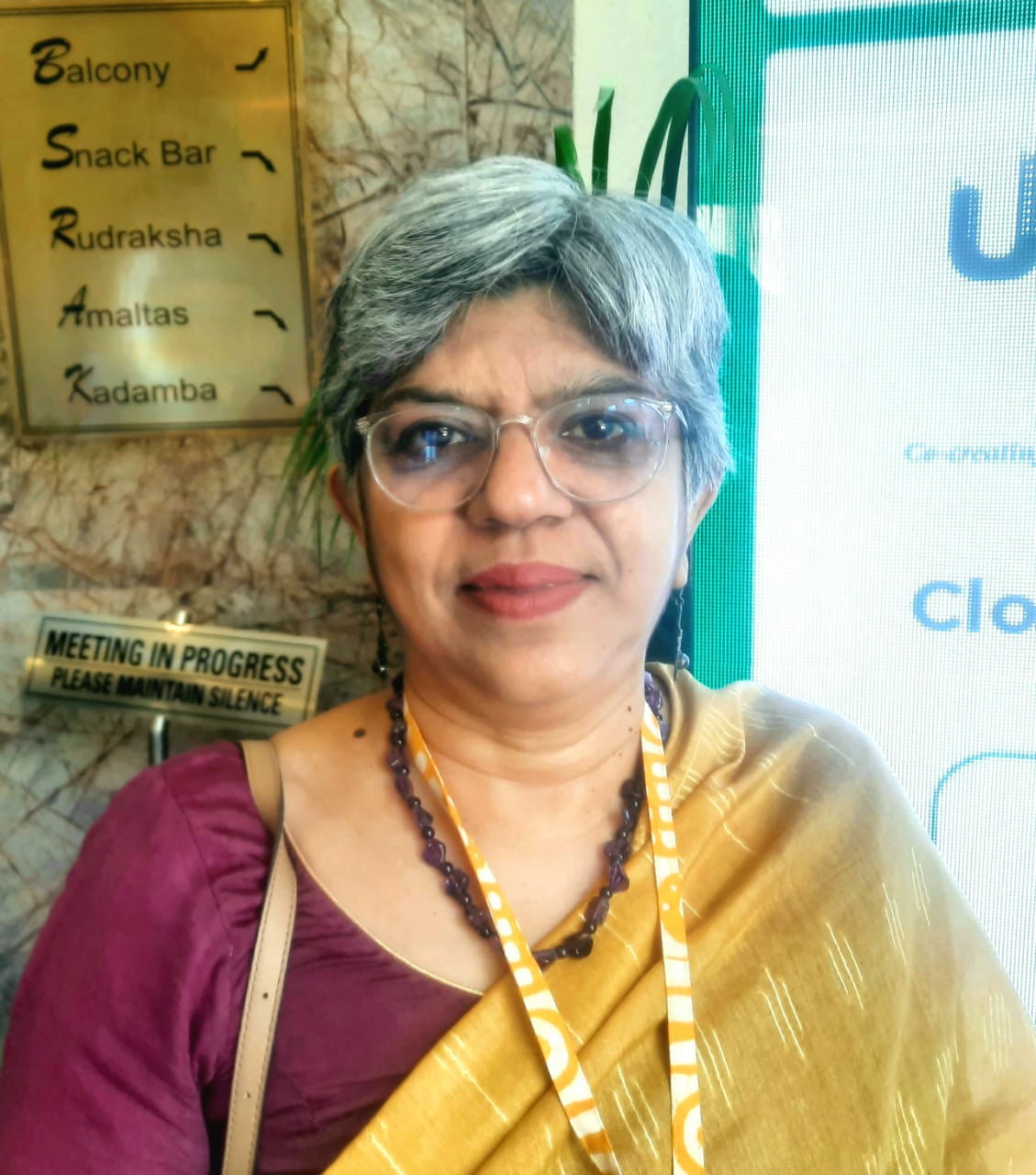San Eco Vision Pvt. Ltd. stands at the forefront of innovation, dedicated to producing eco-friendly alternatives to plastic and metal. The company specializes in crafting world-class bamboo faucets for bathrooms and kitchens and also produces bamboo-based electrical fittings, medicine bottles, and disposable cutlery.
In an exclusive interaction with The Interview World, Kingshuk Sircar, Founder and Director of San Eco Vision Pvt. Ltd., passionately discusses how his company leverages bamboo to offer sustainable lifestyle solutions. He explores the significant opportunities within the bamboo product industry, details the innovative products they design, shares insights on consumer adoption, and emphasizes the vital role these products play in promoting environmental sustainability. Here are the key insights from his conversation.
Q: How is San Eco Vision transforming the use of bamboo to create sustainable lifestyle solutions?
A: We founded this organization in 2018, but before that, we had already started working together. Neither of us is originally from the bamboo sector. I have over 27 years of experience in the international media sector, while my partner, though based in Singapore, worked globally. He served as the Chief Protocol Officer with the Government of Tripura and retired in 2018-19 before joining forces with me.
Our main vision stems from what I’ve observed in the global market. Especially in countries like China, Vietnam, and Indonesia, people use bamboo products in innovative and impactful ways. Unfortunately, in India, we have not embraced bamboo as seriously or with the same intensity.
Q: What are the key opportunities for growth and innovation in the bamboo products industry?
A: Let me explain where India stands in the global bamboo industry. While India ranks second in bamboo production, our global market share is shockingly low—less than 1%. In contrast, China dominates with around 67% of the market. What’s more surprising is that non-bamboo-producing countries like Singapore and the Netherlands outperform us in market reach. They don’t grow bamboo, yet their presence in the global bamboo market is stronger. This highlights their organized nature of markets.
The root of the problem lies in our lack of focus on marketing. States like those in the Northeast, Maharashtra, Kerala, Karnataka, and Jharkhand produce vast amounts of bamboo, with many skilled artisans working at a local level. However, there are no effective platforms for marketing their products. As a marketer, I clearly see this gap. The government is investing heavily in promoting bamboo production, but they are failing to invest in marketing it properly—that’s where the real issue is.
Take Delhi, for example. If you search within a 50-kilometer radius, you won’t find a single shop exclusively selling bamboo products or even authentic Northeastern goods. Yet, within that same radius, you’ll find countless Nike stores. That’s the stark difference in how we market other products versus bamboo, and it speaks volumes about the missed opportunity in the bamboo industry.
Q: What types of bamboo products have you designed, and how are they aligning with current market demand?
A: We began our journey with a clear understanding of the product, one that didn’t require market research since it wasn’t something entirely new. The product in question was something we were already using and needed—faucets. The only change we made was in the raw material. Instead of metal or plastic, we transitioned to bamboo. These faucets include single-flow and mixer types, common in every household. On average, a two-bathroom flat has about 11 faucets in the bathrooms and kitchen. This number highlights the vast potential of the market.
Now, consider if we could capture just 1% of the global faucet market by replacing metal or plastic with bamboo. The global faucet industry, even with a modest 1% shift, represents a staggering ₹85,000 crore opportunity. That’s the scale we’re dealing with.
Next, let’s talk about bamboo strip cutlery. Today, most disposable cutlery on the market is made from either plastic or bleached wood. However, given our expertise in producing bamboo strips—commonly used for making mats—we can use the same process to create eco-friendly, disposable cutlery. This presents another promising market opportunity.
Beyond faucets and cutlery, there’s potential for bamboo to replace plastic in other sectors as well. For example, we could swap out plastic medicine bottles with bamboo alternatives, suitable for holding 90 to 120 capsules. Pharmaceutical, Ayurvedic, and cosmetic companies can use these bottles. Eventually, we can offer a sustainable packaging solution to these industries by leveraging bamboo. By transitioning from plastic to bamboo, we open up multiple avenues for innovation and market penetration across industries.
Q: Will these bamboo products be cost-effective for consumers and competitive in the market?
A: The issue here isn’t about cost-effectiveness; it’s about sustainability. When it comes to economics, nothing competes with plastic. Plastic products, like bottles, are mass-produced using molds, churning out hundreds every minute. Bamboo products, on the other hand, can’t match that speed. They are crafted manually or semi-manually, which drastically slows down production.
The real challenge isn’t the price difference—it’s the production capacity. While 1,000 plastic bottles can be manufactured in just a few hours, creating a single bamboo item can take several hours. This disparity in production time is the crux of the problem.
Q: How many farmers are currently partnered with you, and how are they involved in your operations?
A: At this stage, everything is still at the concept and Detailed Project Report (DPR) level. However, in the next year, as we scale up production, we’re aiming to create around 400 direct jobs and approximately 700 indirect jobs in the first phase alone. If we successfully cultivate market demand, this figure could grow significantly. Over the next decade, we have the potential to multiply these numbers by five, transforming the landscape. This product truly has game-changing potential.
Q: What initiatives is your organization taking to shift consumer preferences toward bamboo products, and what actions are needed from other stakeholders to support this change?
A: This project is already linked with the Department of Science and Technology, IIT Delhi, and several other organizations. Our first major milestone was securing initial funding and support from IIT Delhi and the Department of Science and Technology. We’ve now installed these products in various high-profile locations, including IIT Delhi and residences of some well-known figures, like ministers, so they can use and test the product. So far, we’ve had no complaints—they’re using it without issues. Personally, I’ve been using it in my own home, and a few of my close friends, about four or five of them, have installed the product in their homes as well. The feedback from these early users has been overwhelmingly positive.
As we prepare for a full-scale launch, we’re frequently asked whether the product is available in the market and where it can be purchased. The demand is evident, but changing consumer mindsets is a challenge. Shifting attitudes takes time, especially when introducing something new. Think back to when computers were first introduced—there was apprehension, and people questioned the value. But as with any innovation, it’s only a matter of time before people realize the benefits.
For users, our product offers the same features as conventional options but with a more authentic and aesthetically pleasing design. On the manufacturing side, the advantages are significant. We’ve identified Assam as the primary location for production. This area has around 2,500 unemployed artisans and over 70 to 80 ITI-trained individuals who are sitting idle, with many locals migrating elsewhere in search of work. By setting up production here, we won’t just create employment; we have the potential to halt migration and even encourage reverse migration, which is one of the biggest challenges today. Establishing this ecosystem could make a transformative impact on the community.
Q: How do bamboo products contribute to environmental sustainability, and what impact can they have on reducing ecological footprints?
A: Let’s start with faucets as an example. A typical faucet uses about 1.5 to 2 kilograms of metal. Now imagine replacing just 1 million faucets with bamboo. The amount of metal you would save could be enough to build a ship. That’s just one part of the equation.
Next, let’s talk about disposable cutlery—a major environmental issue. The plastic cutlery industry is facing a huge crisis. You’d be shocked to know that every month, 22,000 tons of disposable plastic cutlery are dumped into the ocean. The U.S. and China primarily generate such high level of plastic waste. The sheer volume—22,000 tons per month—is staggering. If we continue at this rate, the long-term environmental damage will be catastrophic. In 50 years, the world we envision will be horrific unless we take serious action now.
We’ve seen similar concerns with the excessive use of petroleum and diesel, with predictions that we may return to bullock carts in the future. We are creating an environment that is unsustainable and dangerous for future generations.
Plastic is a key offender. It not only harms the environment when it’s produced but also when it’s discarded, releasing harmful polymers. That’s the core challenge we’re facing. My vision is to replace as many plastic products as possible with eco-friendly alternatives. There are countless sustainable materials available. For example, I’ve developed footwear made from loofah, a natural plant. If we focus on advancing technologies in these areas, we could create not only better products but also a healthier future for the planet.









